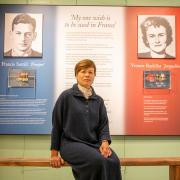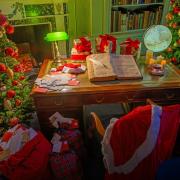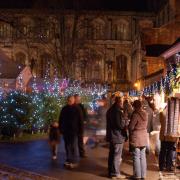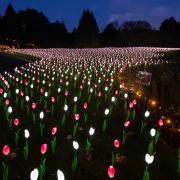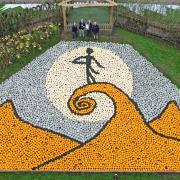With garden guides and wildlife books today being published in their thousands; who would have thought that our fascination with the outdoors started with one man in a quiet corner of Hampshire writes William Gibson
Quiz question. What is the fourth highest selling book of all time, never out of print since its publication in 1789? The surprise answer: The Natural History of Selborne by Gilbert White, who died 220 years ago in June 1793.
White was a clergyman who spent most of his life after 1728 in east Hampshire, the majority of it living at a house called Wakes in the village of Selborne. The village, overlooked to the south west by “ a vast hill of chalk, divided into a sheep down, the high wood and a long, hanging wood called The Hanger” is little changed since his day, apart from the tarmac on the roads and the number of inhabitants. The village consists of “one single straggling street, three quarters of a mile in length, in a sheltered vale, and running parallel with The Hanger”.
Gilbert White was born in 1720 at Selborne Vicarage, where his grandfather was vicar, and was originally educated at home. He started formal education at Farnham, then later in Basingstoke, before going on to Oriel College, Oxford. There, as well as serious classical studies, he spent much of his time on what he called “field diversions”, out in the countryside shooting for sport.
After university White spent some time travelling around the country visiting friends and relations but he eventually settled down and was ordained as a priest on 11th March 1749. Two years later, possibly inspired by his brother in law Thomas Barker, he first started to keep records of garden activity at Wakes (in what he called The Garden Kalendar), something he continued to do until shortly before his death.
His first interest in the garden was the growing of flowers, annuals and perennials, and he recorded details of soil preparation, sowing dates and time to germinate; information which he passed on for the benefit of would-be gardeners and farmers. He later became fascinated with the production of potatoes, a crop not yet well known in the mid eighteenth century, particularly in rural areas where suspicion and superstition surrounded them; but White was so determined to establish a crop which he considered would be beneficial as a main food source that he paid local cottagers and farmers to grow them to his instructions.
In 1766 he widened his interest in the recording of natural phenomena from the mainly utilitarian garden and crop records to the more general wild flowers, plants and trees of the local countryside. These records were entered into a notebook which he later called Flora Selborniensis.
All of White’s early records were kept very much to himself or shared with local contacts for their particular benefit and it is likely that he would never have achieved his reputation as one of the earliest, and most observant, of natural historians if he had not moved out of his localised isolation.
In London in 1767 White met the author of British Zoology, Thomas Pennant, who was then preparing a further edition of his earlier work. To help with this Pennant was looking for local correspondents to provide information on the fauna of different regions in Britain and, from August 1767, the two began a long-lasting exchange of letters.
From this start to an exchange of information came a more important contact. Daines Barrington, a London lawyer, was introduced to Gilbert White by Pennant and provided him with a copy of his Naturalist’s Journal. This contained pages, one week to a page, divided into columns for entering details of weather conditions and observations of plants, trees, birds, insects and mammals. In his introduction to the volume, Barrington expressed the wish that “many such journals kept in different parts of the kingdom perhaps the very best and accurate material for a General Natural History of Great Britain may, in time, be expected”. White used this format for recording his close observations of nature continuously from 1768 until the year of his death and many of the entries subsequently featured in expanded form in his Natural History of Selborne.
The book for which he is remembered was not published until 1789, four years before his death, although Daines Barrington had encouraged him to prepare his observations for publication at an earlier date, following the reading of some of his letters to the Royal Society. The book consists of the letters to Pennant and Barrington, illustrated with engravings from Thomas Bewick’s “British Birds”.
In his “Advertisement” (or introduction) to the book White wrote: “If stationary men would pay some attention to the districts on which they reside, and would publish their thoughts respecting the objects that surround them, from such materials might be drawn the most complete county histories, which are still wanting in several parts of this kingdom, and in particular in the county of Southampton”. It was in pursuit of this ideal that the book was published.
The early letters contain descriptions of Selborne and its surrounding areas and of the house (Wakes), where White did so much work in the gardens. As they progress, they contain increasingly detailed observations of the minutiae of natural history, many of which recorded discoveries then new to science. For instance he was the first to recognise the importance of earth worms, both as food for birds and small mammals but also, crucially, for their contribution to aeration and improvement of soil by eating the earth through which they burrowed. It was another hundred years before Charles Darwin came to the same conclusions and wrote a treatise on the subject.
With the help of a musical friend White discovered that all owls hooted in a note of B flat, a fact not proved until the age of electronic equipment nearly two centuries later.
Perhaps his most surprising achievement was identification of harvest mite, an infestation about which modern medical science has very sketchy knowledge. These creatures he described as “very minute, scarce discernible to the naked eye” and “very troublesome and teasing all the latter end of the summer, getting into people’s skins….and raising tumours which itch intolerably”. The writer can testify to that, but it took a vet to identify the culprit!
Anyone reading the book then visiting the village will find so much just as White described it. Shaded lanes called Long Lythe and Short Lythe, Gracious Street passing the wheelwright’s cottage, the Plestor or green outside the church, the zig-zag rising from the Wakes’ garden up through the Hanger to Selborne Common.
Gilbert White is buried in a modest grave on the north side of St Mary’s Church, just where he asked to rest. Wakes, a long, low, narrow house with far-reaching gardens, is now a museum to his memory, containing among other artefacts the original manuscript of his magnum opus, and also celebrates the lives of Frank and Lawrence Oates (the explorer who died on Captain Scott’s fateful Antarctic expedition) whose family made a significant financial donation to allow the house to be purchased from the last private owner in 1955 and conveyed to Trustees to establish the museum.
***
Visit the house
Gilbert White’s House and Garden
The Wakes, High Street, Selborne, GU34 3JH
Open from: 10.30am – 5.15pm, Tuesday to Sunday
Admission: starts from £6.50 for the garden only
Contact: Call 01420 511275 or visit http://www.gilbertwhiteshouse.org.uk to find out more








